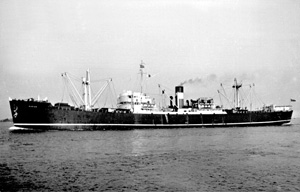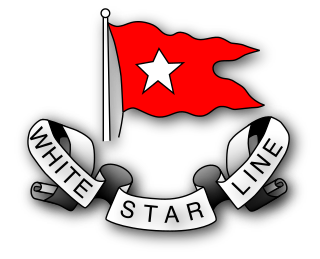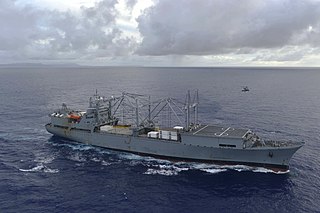This page is based on this
Wikipedia article Text is available under the
CC BY-SA 4.0 license; additional terms may apply.
Images, videos and audio are available under their respective licenses.

A reefer ship is a refrigerated cargo ship, typically used to transport perishable commodities which require temperature-controlled transportation, such as fruit, meat, fish, vegetables, dairy products and other foods.
The SS Arcadia Victory was a Victory ship built during World War II for cargo shipping. She was launched by the California Shipbuilding Company on 1 July 1944 and completed on 22 September 1944. The ship’s United States Maritime Commission designation was VC2- S- AP3, hull number 41.

SS Empire Galahad was a refrigerated cargo ship built in 1942 and scrapped in 1967. She was also called SS Celtic Star (1946), SS Murillo (1946–52), SS Bogliasco (1952–54), MV Bogliasco (1954–63) and MV Ocean Peace (1963–67). She was scrapped in Taiwan in 1967.
Empire Activity was the name of a number of ships.
Empire Bardolph was a 7,017 GRT refrigerated cargo ship which was built in 1942 for the Ministry of War Transport (MoWT). She was sold in 1946 and renamed Memling and sold again in 1953 and renamed Vancouver Star, being renamed Memling in 1957. She was scrapped in 1959.
Yelkenci was a 7,052 GRT refrigerated cargo ship which was built in 1943 for the Ministry of War Transport (MoWT) as Empire Camp. She was sold in 1946 and renamed Valacia. In 1951, she was sold and renamed New York City. A further sale in 1955 saw her renamed Loch Morar. A final sale to Turkish owners saw her renamed Yelkenci. She served with them until scrapped in 1971.
Nelson Star was a 7,365 GRT refrigerated cargo liner that was built in 1942 for the Ministry of War Transport (MoWT). In 1946 she was sold to Blue Star Line and renamed Gothic Star. She was renamed Nelson Star in 1948 and Patagonia Star in 1958. In 1961, she was sold and renamed Eirini. In 1970, she was sold to Cypriot owners and renamed Byzantium. After engine damage and a fire while laid up, she was scrapped in 1971.
Inchmay was a 7,058 GRT refrigerated cargo liner that was built in 1943 by Short Brothers Ltd, Sunderland, Co Durham, United Kingdom as Empire Cromer for the Ministry of War Transport (MoWT). In 1946, she was sold into merchant service and renamed Corrientes. In 1955 she was sold to Hong Kong and renamed Inchmay. In 1966, she was sold to Pakistan and renamed Kaukhali, serving until 1966 when she was scrapped.

SS Gallic was a cargo steamship built in 1918. During her career, she had six different owners and sailed under the flags of the United Kingdom, Panama and Indonesia. In spite of prevailing maritime superstition that it is unlucky to change a ship's name, she underwent seven name changes and survived a 37-year career unscathed. She was scrapped at Hong Kong in 1956, the last surviving White Star Line cargo ship.

MV Melbourne Star was a British refrigerated cargo liner. She was built by Cammell Laird and Co in 1936 as one of Blue Star Line's Imperial Star-class ships, designed to ship frozen meat from Australia and New Zealand to the United Kingdom. She served in the Second World War and is distinguished for her rôle in Operation Pedestal to relieve the siege of Malta in August 1942. She was sunk by torpedo in 1943 with the loss of 115 lives.

MV E Evangelia is a shipwrecked 7,355-gross register ton (GRT) refrigerated cargo ship at Costinești on the Black Sea coast of Romania. She was built in Northern Ireland in 1942 as the Empire ship Empire Strength, was operated by Blue Star Line from 1942 to 1961, was bought by Greek shipowners in 1965 and wrecked in 1968. The ship had four names in her career, having been renamed Saxon Star in 1946, Redbrook in 1961 and E Evangelia in 1965.
MV Northumberland was a refrigerated cargo liner built in 1955 and scrapped in 1978.

The Type C5 ship is a United States Maritime Administration (MARAD) designation for World War II breakbulk cargo and later a container ship for containerization shipments. The first type C5 class ship was a class of ships constructed and produced in the United States during World War II. The World War II C5 class ship was dry bulk cargo ship built by Bethlehem Steel in Sparrows Point, Maryland. Bethlehem Steel built 8 ship in this bulk cargo class and four orders were canceled. The C5 class ship has a DWT of 24,250 and was 560 feet long. The C5 was mainly used as iron ore carriers. The C5 was needed to replace other ships that sank during WW2. First in her class was the SS Venore, USMC #1982, delivered on 20 July 1945. Type C5 class ship designed to fill the need to move iron ore from Santa Cruz, Chile, to Sparrows Point, Md., through the Panama Canal, a round-trip trip 8700 nautical miles.
Post World War 2 four ships were given C5 class type C5-S-78a, these were roll-on/roll-off container ship built by Ingalls Shipbuilding, Inc. of Pascagoula, Mississippi and operated by the Moore-McCormack Lines. The C5-S-78a had a deadweight of 16,000 tons.







